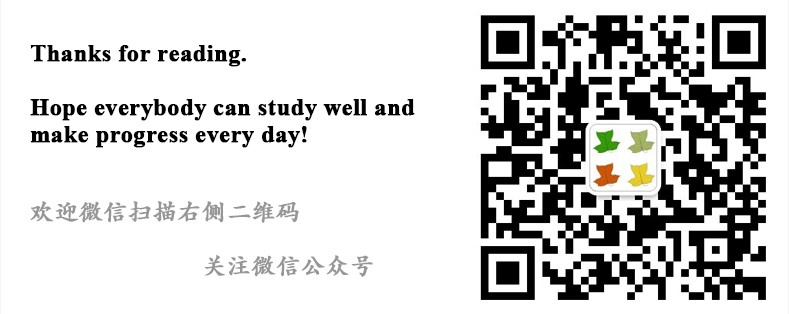博文
Horticulture Research:油柿基因组(补2019.12.23)
||
The persimmon (Diospyros oleifera Cheng) genome provides new insights into the inheritance of astringency and ancestral evolution
First author: Qing-gang Zhu; Affiliations: CAAS Zhejiang University (浙江大学): Hangzhou, China
Corresponding author: Xue-ren Yin
Persimmon (Diospyros kaki) is an oriental perennial woody fruit tree whose popular fruit is produced and consumed worldwide. The persimmon fruit is unique because of the hyperaccumulation of proanthocyanidins during fruit development, causing the mature fruit of most cultivars to have an astringent taste. In this study, we obtained a chromosome-scale genome assembly for ‘Youshi’ (Diospyros oleifera, 2n = 2x = 30), the diploid species of persimmon, by integrating Illumina sequencing, single-molecule real-time sequencing, and high-throughput chromosome conformation capture techniques. The assembled D. oleifera genome consisted of 849.53 Mb, 94.14% (799.71 Mb) of which was assigned to 15 pseudochromosomes, and is the first assembled genome for any member of the Ebenaceae. Comparative genomic analysis revealed that the D. oleifera genome underwent an ancient γ whole-genome duplication event. We studied the potential genetic basis for astringency development (proanthocyanidin biosynthesis) and removal (proanthocyanidin insolublization). Proanthocyanidin biosynthesis genes were mainly distributed on chromosome 1, and the clustering of these genes is responsible for the genetic stability of astringency heredity. Genome-based RNA-seq identified deastringency genes, and promoter analysis showed that most of their promoters contained large numbers of low oxygen-responsive motifs, which is consistent with the efficient industrial application of high CO2 treatment to remove astringency. Using the D. oleifera genome as the reference, SLAF-seq indicated that ‘Youshi’ is one of the ancestors of the cultivated persimmon (2n = 6x = 90). Our study provides significant insights into the genetic basis of persimmon evolution and the development and removal astringency, and it will facilitate the improvement of the breeding of persimmon fruit.
柿子是一种源自东方多年生木本果树,在全球范围内都有种植、生产,受到全球消费者的喜爱。柿子果实风味独特,因为其在发育过程中会过量积累原花青素,导致大多数栽培种的成熟果实具有涩味。本文中,作者通过结合二代测序Illumina、三代测序SMRT和Hi-C技术,获得了一个二倍体柿子油柿(Diospyros oleifera)的染色体级别基因组组装。油柿的基因组组装大小约为849.53 Mb,其中94.14%能够挂载到15个假染色体上,该基因组是柿科第一个被报道的。比较基因组学分析显示油柿的基因组经历了一次古老的γ全基因组复制事件。作者还研究了柿子果实发育过程中涩味形成(原花青素生物合成)和去除(原花青素不溶化)的潜在遗传分子机制。原花青素生物合成基因大部分分布在一号染色体上,并且这些基因聚集对于柿子涩味遗传的稳定性非常重要。基于基因组的RNA-seq鉴定到了去涩基因,启动子分析显示这些基因的启动子含有很多低氧响应的基序,这与生产实践中通过高浓度的CO2处理来去涩的方法原理一致。利用油柿基因组作为参考基因组,SLAF-seq的结果显示油柿是六倍体栽培种的其中一个祖先。本文的研究为柿子演化、涩味形成以及去涩等提供了新的视野,并且有助于将来柿子的遗传育种改良。
通讯:殷学仁 (https://person.zju.edu.cn/yxr)
个人简介:2001-2005年,浙江大学,学士;2005-2010年,浙江大学,博士。
研究方向:果实品质(质地、风味、色泽等)分析及变化规律研究、果实品质及采后保鲜相关技术工艺研发/优化、果实成熟衰老的生理生化系分子基础解析、转录因子及转录调控机制研究。
doi: https://doi.org/10.1038/s41438-019-0227-2
Journal: Horticulture Research
Published date: December 18, 2019

https://blog.sciencenet.cn/blog-3158122-1211323.html
上一篇:Molecular Plant:植物mRNA和DNA表观修饰研究综述
下一篇:PNAS:玉米异三聚体G蛋白β亚基作用于分生组织发育和免疫响应
全部作者的其他最新博文
- • Plant Physiology:CsMADS3促进柑果中的叶绿素降解和类胡萝卜素合成(华中农业大学)
- • Molecular Plant:LBD11-ROS反馈调节作用于拟南芥的维管形成层增殖和次生生长(浦项科技大学)
- • Science Advances:根结线虫通过调控植物的CLE3-CLV1模块,促进侵染进程(日本熊本大学)
- • Nature Communications:油菜素内酯参与植物营养生长期转变的分子机制解析(浙江农林大学)
- • Current Biology:光合作用产生的蔗糖驱动侧根“生物钟”(德国弗莱堡大学)
- • PNAS:花同源异型基因在叶中被抑制、花中被激活的分子机制(南卡罗来纳大学)